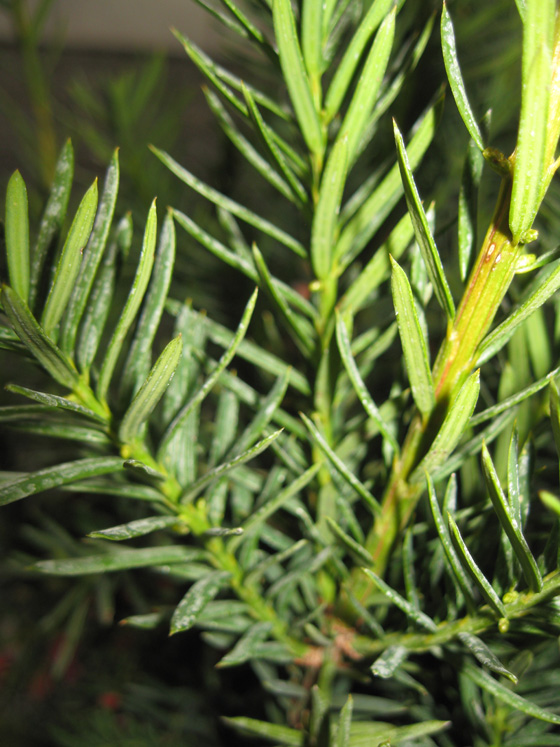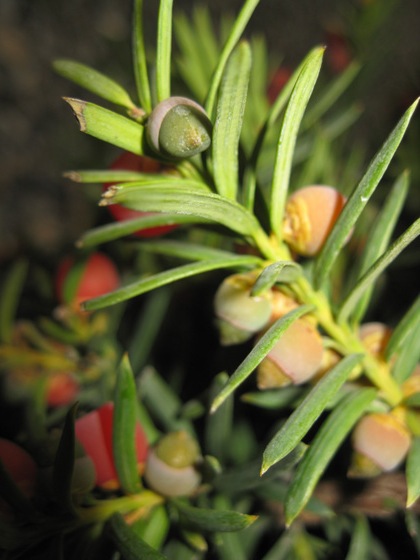| PSC 2620: Woody Trees and Shrub | Course Home | Week 12 |
Taxus x media - Anglojap Yew
Plant Viewer
 |
 |
| The leaves are 1/2 - 1 inch long and dark green in color. | The leaves are arranged in a two ranks on the stem. |
 |
|
| The seed is encased in a bright red fleshy covering. |
Plant Description
Taxus x media, or Anglojap Yew, is a hybrid between Taxus baccata and Taxus cuspidata. It is regularly smaller than either of its parent species, but exhibits the same great variation in form. It performs well in moist, well-drained slightly acidic soils. In our climate it is best grown in full to part shade. The cultivars of this hybrid species are the most commonly used Yews.
In appearance it is often identical to Taxus cuspidata except in a couple of features. First, the leaves are arranged in two well-defined ranks on the stem. Second, the stems retain their light green color for several years before turning reddish-brown.
Landscape Use
There are several different cultivars available with varying forms. Law and spreading forms are most commonly used as a foundation plantings, while upright forms are used for hedges and screens.
Points of Interest
All parts of Anglojap Yew is highly poisonous if ingested. Species of Taxus remain one of the leading causes of horse and cattle poisoning. Do not plant where it may be eaten by livestock!
Notable Cultivars
Hicks
Among the most popular of the narrow and columnar cultivars. It grows 20 feet high and 8 feet wide. It typically has two main leaders, which can cause lead to serious breakage under our winter snows. Shown above in 3d.
Dark Green Spreader
The most popular spreading cultivar. It grows very dense and is good for use as a low hedge. Grows 3-4 feet high and 6-8 feet wide.

Citation
Similar in form to Hicks, but it regularly has a single leader, so snow loads are less likely to break the limbs. Grows 15-20 feet high and 6-8 feet wide.